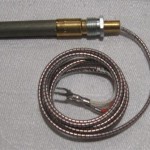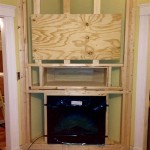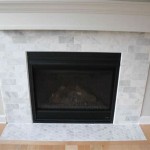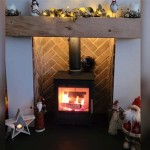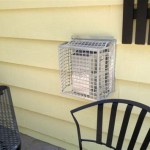Understanding Wood Burning Fireplace Doors: Functionality and Selection
Wood burning fireplaces provide a source of heat and ambiance for many homes. However, open fireplaces can be inefficient, losing heat up the chimney and potentially posing safety hazards. Wood burning fireplace doors represent a functional and aesthetic solution to these challenges. This article explores the various aspects of fireplace doors, including their benefits, types, selection criteria, and maintenance requirements.
The primary function of fireplace doors is to enclose the firebox, preventing embers and sparks from escaping into the room. This significantly reduces the risk of fire hazards, especially when the fireplace is left unattended. Furthermore, fireplace doors help to control airflow, improving the efficiency of the fire. By regulating the amount of air entering the firebox, doors can optimize combustion and reduce heat loss up the chimney. This can result in lower heating costs and a more comfortable indoor environment.
Aesthetically, fireplace doors enhance the appearance of the fireplace. They are available in a wide range of styles, finishes, and materials, allowing homeowners to customize the look of their fireplace to complement their overall decor. Whether a traditional, modern, or rustic aesthetic is desired, there is a fireplace door to suit almost any design preference.
Improved Safety and Efficiency
One of the most significant advantages of installing fireplace doors is the improvement in safety. Open fireplaces can eject sparks and embers, potentially igniting nearby carpets, furniture, or other flammable materials. Fireplace doors act as a barrier, containing these hazards within the firebox. This is particularly important for homes with young children or pets who may be drawn to the fire.
Beyond safety, fireplace doors contribute to improved energy efficiency. Open fireplaces can draw warm air from the room and exhaust it up the chimney, creating a negative pressure that requires the heating system to work harder. By sealing the firebox with doors, this heat loss is minimized. Furthermore, many fireplace doors feature adjustable vents that allow homeowners to control the airflow, optimizing combustion and reducing the amount of wood needed to maintain a fire. This increased efficiency translates to lower heating costs and a reduced environmental impact.
The use of fireplace doors can also mitigate drafts. When a fireplace is not in use, an open chimney can act as a conduit for cold air to enter the home. Fireplace doors provide a barrier against these drafts, helping to maintain a consistent temperature throughout the house.
Types of Fireplace Doors
Fireplace doors are available in a variety of styles and configurations, each offering different benefits and aesthetic appeal. A common distinction is between surface-mount and inside-fit doors. Surface-mount doors attach to the outside of the fireplace opening, while inside-fit doors are designed to fit within the firebox itself. Each type requires different installation methods and offers a different visual profile.
Materials used in the construction of fireplace doors also vary. Common materials include steel, aluminum, and cast iron. Steel doors are durable and affordable, while aluminum doors are lightweight and corrosion-resistant. Cast iron doors offer a classic look and excellent heat retention. The choice of material depends on budget considerations, aesthetic preferences, and the specific requirements of the fireplace.
Glass is another critical component of fireplace doors. Common types of glass include tempered glass and ceramic glass. Tempered glass is heat-resistant and shatter-resistant, while ceramic glass can withstand even higher temperatures. Ceramic glass is generally preferred for wood-burning fireplaces due to its superior heat resistance and clarity.
Door styles can range from simple, single-panel designs to more elaborate multi-panel configurations with decorative accents. Bifold doors are a popular choice, as they can be easily opened and closed without taking up much space. Sliding doors offer a sleek, modern look and can be easily adjusted to control airflow. Screen doors provide a compromise between an open fireplace and a fully enclosed firebox, allowing for some airflow while still preventing sparks from escaping.
Selecting the Right Fireplace Doors
Choosing the right fireplace doors involves careful consideration of several factors, including the size and shape of the fireplace opening, the style of the home, and the desired level of functionality. Accurate measurements of the fireplace opening are essential to ensure a proper fit. The height and width of the opening should be measured at several points to account for any irregularities.
The style of the fireplace doors should complement the overall decor of the room. Consider the existing architectural details, color palette, and furniture style when selecting a door design. A modern home might benefit from sleek, minimalist doors, while a traditional home might be better suited to more ornate, decorative doors.
The level of functionality desired is another important consideration. If the primary goal is to improve safety and efficiency, a simple, well-sealed door may be sufficient. However, if aesthetics are also a priority, more elaborate door designs with decorative features and adjustable vents may be preferred.
Finally, budget constraints should be taken into account. Fireplace doors range in price from relatively affordable to quite expensive, depending on the materials, style, and features. Establish a budget beforehand and focus on doors that meet your needs and preferences within that price range.
It is important to consult with a qualified professional during the selection and installation process. A professional can provide expert advice on choosing the right doors for your specific fireplace and ensure that they are installed safely and correctly.
Proper installation of fireplace doors is critical for ensuring their safety and efficiency. Incorrect installation can lead to air leaks, reduced heat output, and even fire hazards. It is generally recommended to hire a professional installer to ensure that the doors are properly sealed and secured.
Regular maintenance is essential for prolonging the life of fireplace doors and ensuring their continued performance. This includes cleaning the glass regularly to remove soot and ash, lubricating hinges and latches, and inspecting the doors for any signs of damage or wear. Promptly addressing any issues will help to prevent more serious problems in the future.

Standard Size Masonry Fireplace Doors Fixed Frame

Wood Burning Fireplace Doors And Screens Ironhaus

Glass Fireplace Doors

Grandseal Praire Style Masonry Fireplace Door With Ceramic Glass

What S The Connection Between Fireplace Doors And Smartphones

Fireplace Glass Doors Vs Screens Full Service Chimney

Wilkening Fireplace Fireplaces Doors Inserts Walker Mn

The Value Of Glass Doors For Your Fireplace Royal Oak Mi

The Brookfield Fireplace Door Is One Of Our Best Ers Perfect For Both Indoor And Outdoor Use This F Glass Doors

Glass Fireplace Doors Sierra Hearth And Home
Related Posts


